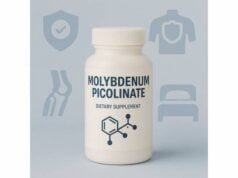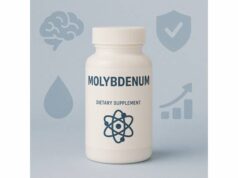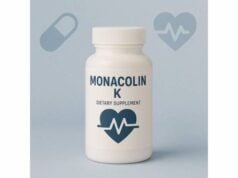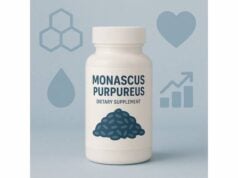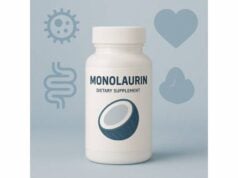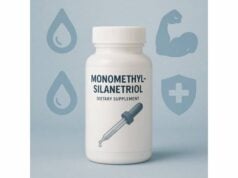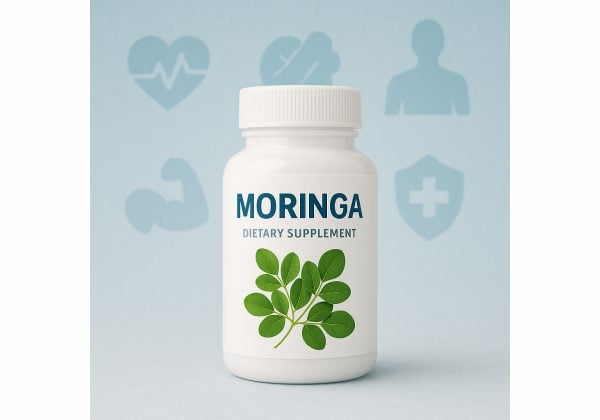
Moringa (Moringa oleifera) is a drought-tolerant tree whose leaves, seeds, and pods have been eaten for centuries across South Asia and parts of Africa. In the past decade it has moved from traditional kitchens to wellness shelves, thanks to its dense nutrition profile and promising research. Leaf powders and capsules are naturally rich in polyphenols and micronutrients, and early human studies suggest supportive effects on fasting glucose and cholesterol alongside antioxidant and anti-inflammatory activity. Moringa’s appeal is practical: it’s a food-first supplement that fits into daily routines, whether sprinkled over breakfast or taken as capsules. At the same time, quality varies, dosing isn’t standardized, and more rigorous clinical trials are still needed. This guide separates facts from hype. You’ll learn what moringa may (and may not) do, how to choose a product, realistic dosage ranges for common goals, and the main safety considerations—including who should avoid it. The goal is simple: give you enough context and specifics to decide whether moringa deserves a place in your own plan.
Quick Overview
- May modestly support fasting glucose and HbA1c with 2.4 g/day leaf powder over 12 weeks.
- Provides polyphenols and antioxidants that may help counter everyday oxidative stress.
- Typical supplemental range: 500 mg–6 g/day of leaf powder or capsules.
- Avoid during pregnancy and for anyone with upcoming surgery or on warfarin, unless medically supervised.
Table of Contents
- What is moringa and how it works
- What benefits are supported by research
- How to use moringa effectively
- How much moringa per day
- Side effects, interactions, who should avoid
- What we still dont know
What is moringa and how it works
Moringa oleifera is a fast-growing tree native to the Indian subcontinent, sometimes called the drumstick tree for its long pods. The leaves are the star: they’re rich in polyphenols (including quercetin and kaempferol), phenolic acids, glucosinolates such as glucomoringin (which can yield moringin, an isothiocyanate), vitamins, minerals, and fiber. In most supplements, you’ll see “moringa leaf powder” or “moringa leaf extract.” Seed oil (often labeled “ben oil”) is used in cosmetics and cooking but is not the typical oral supplement for metabolic health.
How it works, in plain terms:
- Antioxidant support. Leaf polyphenols help neutralize reactive oxygen species and upregulate endogenous defense pathways such as Nrf2. This biochemical housekeeping is one reason moringa is investigated for cardiovascular and metabolic support.
- Anti-inflammatory signals. Extracts can down-shift inflammatory mediators (for example, NF-κB pathways in preclinical models). The relevance for humans is still being mapped, but it aligns with the antioxidant story.
- Glycemic support. Moringa may slow carbohydrate absorption by inhibiting digestive enzymes and improve insulin signaling. In early trials, daily leaf powder changed fasting glucose and HbA1c by small, statistically significant margins.
- Lipid and blood pressure effects. Preliminary findings suggest possible reductions in LDL-C and modest blood pressure changes in certain groups, though evidence is mixed and heterogeneous.
- Nutrient density. As a food, moringa contributes plant protein, iron, calcium, potassium, and fat-soluble vitamins when used regularly in cooking, teas, or fortified foods.
Importantly, moringa is not a single-compound drug. Different parts of the plant, growing conditions, and extraction methods lead to large variability in active constituents. A 500 mg capsule from one brand may deliver a very different polyphenol fingerprint than a teaspoon of leaf powder from another. That makes dose-to-effect relationships fuzzier than with standardized pharmaceuticals.
What this means for you: treat moringa as a nutrient-dense botanical with potential adjunctive benefits—especially for people working on glycemic control and general cardiometabolic health—rather than as a stand-alone therapy. Focus on quality, start with conservative doses, and track concrete metrics (fasting glucose, lipids, blood pressure, energy, and digestive comfort) over 8–12 weeks before judging results.
What benefits are supported by research
Metabolic health and glycemic control. Small randomized trials have reported favorable changes in fasting glucose and HbA1c after 8–12 weeks of daily leaf powder. One double-blind, placebo-controlled study in adults with prediabetes used 2.4 g/day of dry leaf powder in capsules for 12 weeks and found a statistically significant improvement versus placebo. The magnitude of benefit was modest—think of it as a nudge, not a replacement for diet, activity, or prescribed medications. Real-world takeaways: moringa may be an adjunct for people already working on carbohydrate quality, meal timing, and movement.
Lipid profile and cardiovascular markers. Reviews that pool preclinical and early clinical data suggest a trend toward lower total cholesterol and LDL-C with leaf preparations, possibly by influencing hepatic lipid metabolism and oxidative modification of lipoproteins. Human data are still limited and inconsistent, with variable doses and forms. If lipids are your main goal, prioritize foundational strategies (dietary fiber, plant sterols, aerobic exercise) and consider moringa as an add-on to a comprehensive plan.
Antioxidant and anti-inflammatory effects. Across cell and animal studies, moringa leaf extracts raise antioxidant enzymes and tamp down pro-inflammatory cytokines. In humans, this likely translates into subtle shifts rather than dramatic changes, but it’s a plausible mechanism underpinning reported improvements in metabolic markers and general wellbeing.
Nutritional support. As an edible leaf, moringa can meaningfully contribute micronutrients where diets are sparse. Practical benefits include convenient iron, calcium, potassium, and vitamin A precursors. For many users who take a teaspoon of powder daily (roughly 2–3 g), the nutritional contribution may matter as much as the pharmacologic one.
Physical performance and recovery. Evidence here is preliminary. Some small studies and athlete reports point to perceived energy and recovery benefits, likely tied to antioxidant content and improved diet quality when moringa replaces lower-nutrient calories. Expect individual variation.
Skin and hair (topical seed oil). Moringa seed oil is rich in oleic acid and behaves like a light, stable emollient. It can soften skin, support barrier function, and work as a carrier oil for actives. This is a topical cosmetic effect, not a systemic health change.
What’s weak or unproven. Claims around cancer prevention, dramatic weight loss, or immune “boosting” go beyond current human evidence. There’s promising biology, but clinical certainty is not there. When you see extravagant promises, assume overreach.
Bottom line: the best-supported human outcome today is modest glycemic benefit at gram-level leaf powder doses over 8–12 weeks, with possible improvements in lipids and blood pressure that still need larger, standardized trials.
How to use moringa effectively
Choose the right form.
- Leaf powder (food-like). Versatile and cost-effective. Stir ½–1 teaspoon into smoothies, yogurt, soups, or sprinkle on eggs. Taste is earthy, slightly peppery; start low and build up to tolerance.
- Capsules/tablets (convenience). Helpful if you dislike the taste. Look for products that specify leaf part, harvest and processing methods, and third-party testing results.
- Extracts/tinctures. Useful if standardized (e.g., quantified total polyphenols or specific glucosinolate content). Unfortunately, standardization is rare in moringa.
- Seed oil (topical). For skincare and hair; not the form studied for glucose or lipid support.
Quality checklist.
- Leaf-only identification. Avoid blends that include root or bark; these parts have different safety profiles and are not the focus of human metabolic studies.
- Testing transparency. Look for heavy metals, microbes, and pesticide screens, plus assays for total polyphenols or marker compounds such as quercetin or glucomoringin/moringin.
- Freshness and packaging. Green color (not brown/grey), low moisture, and light-protective packaging help preserve polyphenols.
- Origin and farming. Reputable suppliers disclose country of origin and drying methods (shade-dried or low-temperature dehydration is ideal).
Timing and stacking.
- With meals if your focus is post-meal glucose; this may help slow carbohydrate absorption.
- Morning or midday if you’re sensitive to green, earthy flavors.
- Do not stack with other strong hypoglycemic botanicals (e.g., berberine) without guidance; track glucose if you combine supports.
Habits that amplify results.
- Dial in carbohydrate quality. Pair moringa with fiber-rich carbs (beans, whole grains) and protein; this improves glucose response more than moringa alone.
- Move after meals. Even 10–15 minutes of light walking can augment glycemic control.
- Hydrate. Leaf powder is mildly astringent; extra water helps tolerance.
- Track outcomes. Log fasting glucose, energy, digestion, and any side effects weekly for 12 weeks.
When to expect changes. Most users who respond notice differences in fasting glucose, energy steadiness, or digestive regularity within 4–8 weeks. Lipid changes, if they occur, are usually assessed after 8–12 weeks with consistent intake.
Stop rules. Discontinue and seek advice if you notice persistent GI upset, allergic signs (itching, swelling), unexplained fatigue, or dark urine/light stools that could signal liver stress. Rare idiosyncratic reactions can occur with any botanical.
How much moringa per day
There is no universally accepted therapeutic dose for moringa leaf, but human studies and authoritative monographs offer a practical range for adults:
- General wellness / nutrition add-on: 500 mg–2 g/day of leaf powder or equivalent capsules. Start at 500 mg once daily for 3–7 days, then increase by 500 mg as tolerated.
- Glycemic support (adjunctive): 2–3 g/day of leaf powder or capsule-equivalent, typically divided with meals. One randomized, double-blind trial used 2.4 g/day for 12 weeks and reported improvements in fasting glucose and HbA1c.
- Culinary use: 1–2 teaspoons/day (≈2–6 g) folded into foods. Culinary intake is often at the higher end of the range because the powder is treated like a leafy seasoning.
Topical seed oil (cosmetic):
- Face/body oil: 2–5 drops once or twice daily on damp skin.
- Hair/scalp: 4–8 drops massaged into ends or scalp before washing; frequency 1–3 times weekly.
Titration tips.
- Begin at the low end (e.g., 500 mg/day), especially if you have a sensitive stomach.
- Increase every week by 500–1000 mg until you reach your target or notice benefits, not exceeding 6 g/day without professional guidance.
- Divide doses with meals if using ≥2 g/day to improve tolerance.
Special dosing contexts.
- With antihyperglycemic medications: Stay conservative (≤1–2 g/day initially) and monitor glucose to avoid additive effects.
- Older adults or low body weight: Lower starting doses (250–500 mg/day) may improve tolerance.
- Athletes: If using for nutrient density and recovery, 1–3 g/day with post-exercise meals is reasonable.
Children: Not routinely recommended as a supplement. Culinary amounts in food can be acceptable as part of a balanced diet, but supplementation should be clinician-guided.
Pregnancy and lactation: Avoid supplemental moringa unless prescribed by a qualified clinician who can monitor you. Culinary amounts of cooked leaves in traditional diets may be acceptable; supplements concentrate actives and are not the same as food use.
The wide 500 mg–6 g/day bracket reflects variability in products and individual responses. Anchor your plan to measurable outcomes (labs, symptoms), not just the number on the label.
Side effects, interactions, who should avoid
Typical tolerance. Most people tolerate moringa leaf powder or capsules well, especially when doses are built up gradually. The most common complaints are mild GI symptoms—bloating, gas, or looser stools—usually dose-related and transient. Taking moringa with food and adequate fluids helps.
Rare events. Liver injury appears very rare, but a carefully documented case report exists. Because idiosyncratic reactions can’t be predicted, stop use and seek care if you develop persistent nausea, right-upper quadrant pain, dark urine, or jaundice. Consider baseline and follow-up liver enzymes if you plan multi-month use alongside other supplements.
Potential interactions.
- Glucose-lowering drugs. Moringa may enhance hypoglycemic effects. If you use metformin, sulfonylureas, insulin, or GLP-1/GIP agonists, start low and monitor glucose closely.
- Antihypertensives. Possible additive blood-pressure effects in some individuals; monitor at home when you initiate or increase dose.
- Warfarin and vitamin K. Leaves contain vitamin K; in theory this could interfere with warfarin dosing. If you take warfarin, avoid starting moringa without medical supervision and INR monitoring.
- Antiplatelets/anticoagulants. Theoretical interaction exists with high-polyphenol botanicals; discuss with your prescriber.
- Thyroid medications. Limited data suggest moringa might influence thyroid parameters in small studies; separate dosing by several hours and monitor labs if you combine.
Who should avoid or seek supervision.
- Pregnant individuals. Avoid supplemental moringa (especially non-leaf parts). Safety data are insufficient; certain plant parts may pose risk.
- Breastfeeding. Do not supplement without clinician guidance; culinary use in traditional cuisines is distinct from concentrated capsules.
- Children and adolescents. Use only under professional guidance.
- Pre-operative period. Stop moringa 7–10 days before surgery due to theoretical effects on coagulation and blood pressure.
- Active liver disease or significant hepatic medications. Consider alternative strategies, or use only with medical oversight and periodic labs.
- Allergy to moringa or related botanicals. Discontinue at first sign of hypersensitivity.
Practical safety tips.
- Choose leaf-only products from reputable brands with third-party testing.
- Introduce one change at a time so you can attribute effects accurately.
- Keep a simple log of dose, timing, symptoms, and metrics (glucose, BP).
- Re-evaluate at 8–12 weeks; if there is no measurable benefit, consider discontinuing.
Done well, moringa can be a low-risk, food-forward add-on. Respect that “natural” does not mean risk-free, and pair it with clear goals and monitoring.
What we still dont know
Despite centuries of culinary use and a surge of modern publications, moringa’s clinical evidence is still early-stage. Here’s the current edge of knowledge—and what to watch for next.
Standardization and dose-response. Most supplements are not standardized to key actives (e.g., total polyphenols, specific glucosinolates such as glucomoringin/moringin). Without standardization, comparing studies—or predicting your response—is difficult. Future research needs dose-finding trials using quantified extracts.
Population-specific effects. We need larger, diverse randomized trials in people with type 2 diabetes, metabolic syndrome, hypertension, and dyslipidemia, with consistent endpoints (HbA1c, CGM metrics, LDL-C/apoB, ambulatory BP) over 3–6 months. The promising prediabetes data are a start but not definitive.
Safety over longer horizons. Short-term studies report good tolerance up to several grams per day. Long-term safety (≥6–12 months), particularly in people on multiple medications or with liver disease, requires better documentation—even if serious adverse events remain rare.
Comparative effectiveness. Where does moringa sit relative to other well-studied adjuncts like fiber blends, plant sterols, or green tea catechins? Head-to-head trials would clarify where moringa adds unique value and where simpler options suffice.
Food versus supplement. Culinary moringa (as part of meals) and concentrated capsules are not identical exposures. Understanding how food matrices, cooking methods, and co-ingested nutrients change bioavailability will make dosing advice more precise—and more practical.
Biomarkers that predict response. Early signals suggest some people respond more robustly than others. Microbiome patterns, baseline oxidative stress, or dietary patterns may influence outcomes. Identifying responders could prevent “trial and error” for everyone else.
Environmental and ethical sourcing. As demand rises, sustainable cultivation, fair labor practices, and soil health monitoring (heavy metals) matter. Certifications and transparent supply chains can protect both consumers and growing communities.
For now, a measured, food-first approach makes sense: choose quality leaf-only products, start low, track real metrics, and use moringa to support—not replace—dietary and lifestyle fundamentals.
References
- Moringa oleifera Leaf Supplementation as a Glycemic Control Strategy in Subjects with Prediabetes 2021 (RCT)
- Moringa oleifera: An Updated Comprehensive Review of Its Pharmacological Activities, Ethnomedicinal, Phytopharmaceutical Formulation, Clinical, Phytochemical, and Toxicological Aspects 2023 (Systematic Review)
- Biological properties of Moringa oleifera: A systematic review of the last decade 2025 (Systematic Review)
- Moringa – LiverTox – NCBI Bookshelf 2024 (Safety Overview)
- A Comprehensive Review with Updated Future Perspectives on the Ethnomedicinal and Pharmacological Aspects of Moringa oleifera 2022 (Systematic Review)
Medical Disclaimer
The information in this article is for educational purposes only and is not a substitute for personalized medical advice, diagnosis, or treatment. Always speak with a qualified healthcare professional before starting, stopping, or combining any supplement with medications, especially if you have a medical condition, are pregnant or breastfeeding, or are preparing for surgery. Never ignore professional medical advice because of something you have read here.
If you found this guide useful, consider sharing it with a friend or colleague on Facebook, X (formerly Twitter), or your favorite platform. Your support helps us continue producing clear, trustworthy health content. Thank you.

